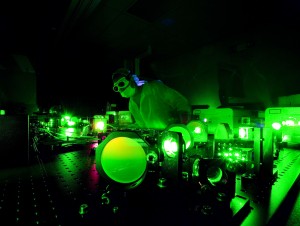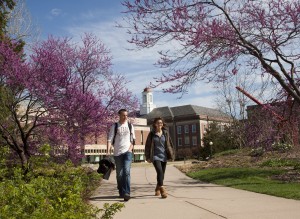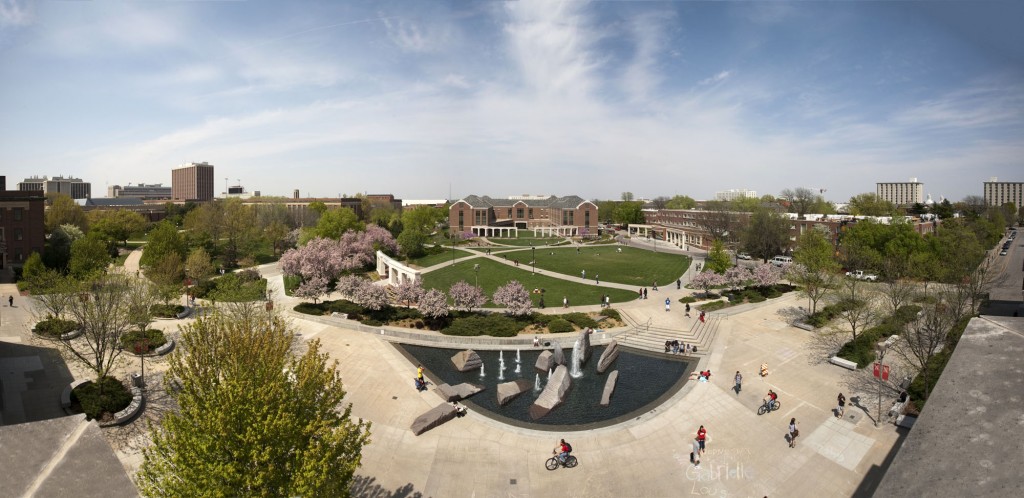The University of Nebraska-Lincoln, a land-grant university and an educational institution of international stature, was chartered in 1869 and is a member of the Association of Public and Land-Grant Universities. UNL was fully accredited by the Higher Learning Commission of the North Central Association of Colleges and Schools in 2007 and is preparing for re-accreditation in 2016.
A Strong Foundation
UNL is one of the nation’s top public land-grant research universities with a commitment to exceptional teaching and learning. It was the first institution west of the Mississippi River to award doctoral degrees — the first was granted in physics in 1896. The discipline of ecology also was born here, and the campus’s botanical gardens and arboreta reflect that tradition. An early institutional interest in literature and the arts provided the foundations for today’s Prairie Schooner literary magazine, the University of Nebraska Press, and the Sheldon Museum of Art, which houses one of the world’s most significant collections of 20th-century American art in a building designed by Philip Johnson.
The Nebraska State Museum got its start in 1871 when the Board of Regents established the “University Cabinet” of natural history specimens. In 1875, Charles Morrill accompanied Yale paleontologists working in the rich fossil beds of western Nebraska. In 1891 when E. H. Barbour ( museum director from 1891 to 1941) came to Nebraska, he worked with Morrill to support the “Morrill expeditions,” and they brought back what would be the beginnings of one of the nation’s leading collections of vertebrate fossils.
Research and Engagement
 The University of Nebraska-Lincoln is a growing Big Ten research university with a strong tradition of research, scholarship and creative activity, and is committed to continued growth in the breadth, quality and impact of its research and scholarship. UNL boasts a robust culture of research collaborations and activity, and seeks to encourage multidisciplinary research and to enhance its regional, national and international collaborations. Nebraskans benefit from the knowledge and research generated by our faculty and students. This research-based service to our state is a feature that distinguishes UNL as a land-grant university.
The University of Nebraska-Lincoln is a growing Big Ten research university with a strong tradition of research, scholarship and creative activity, and is committed to continued growth in the breadth, quality and impact of its research and scholarship. UNL boasts a robust culture of research collaborations and activity, and seeks to encourage multidisciplinary research and to enhance its regional, national and international collaborations. Nebraskans benefit from the knowledge and research generated by our faculty and students. This research-based service to our state is a feature that distinguishes UNL as a land-grant university.
UNL is seeding major new initiatives, growing our creative activity, scholarship and research profile and nurturing strategic partnerships to address 21st-century challenges. UNL’s research enterprise has expanded significantly over the past decade; federal research expenditures doubled from 2002 to 2012. The campus is building on this momentum with an eye to the future. UNL is cultivating collaborations across disciplinary, institutional, state and national boundaries to solve global challenges, address national needs and enhance Nebraska’s economy. The university is expanding its international engagement through research agreements, faculty exchanges and student learning opportunities in strategically selected corners of the globe. UNL also is making strides in developing state-of-the-art facilities essential to world-class research.
Better to Best
 The University of Nebraska-Lincoln is enjoying a strongly positive trajectory. In fall 2012, for the ninth straight year, UNL was among the top 50 public universities listed in U.S. News and World Report’s annual evaluation of America’s Best Colleges. UNL is ranked near the top third of all national universities both public and private (tied with four others at 101st). For the second consecutive year, UNL is featured among schools that focus on student success through enriched offerings and is listed in the ranking report among “A-Plus Schools for B Students.”
The University of Nebraska-Lincoln is enjoying a strongly positive trajectory. In fall 2012, for the ninth straight year, UNL was among the top 50 public universities listed in U.S. News and World Report’s annual evaluation of America’s Best Colleges. UNL is ranked near the top third of all national universities both public and private (tied with four others at 101st). For the second consecutive year, UNL is featured among schools that focus on student success through enriched offerings and is listed in the ranking report among “A-Plus Schools for B Students.”
The State of Nebraska has been relatively immune to the deep destruction of the real estate market and fiscal institutions that have decimated other states’ economies. Nebraska has managed to ride out budget problems with far less drastic measures than many states have undertaken. The forecast for the future is moderately optimistic and quite stable, opening strategic options for UNL that may not be available to other institutions. In 2011, Chancellor Harvey Perlman announced an ambitious set of transformative goals that include adding 5,000 more students to our campus, improving the six-year graduation rate by 10 percent, doubling the number of prestigious competitive awards won by our faculty and increasing total research expenditures to $300 million. This initiative also includes goals for increasing the number of tenure-track faculty members, other instructional faculty, professional staff and graduate assistantships.
Excellent faculty hires at both the junior and senior levels have transformed academic units, while also establishing new signature programs such as digital humanities, math education, brain biology and materials and manufacturing. The affiliation with the Big Ten Conference and its prestigious Committee on Institutional Collaboration affirms UNL’s stature as a major national research university and offers potential for dramatic advances in academic quality, research prowess and institutional reputation.
UNL enjoys strong public support from the state’s residents. Nebraskans value higher education and recognize that education is the key to a strong workforce and a vibrant economy. Nebraskans view UNL as “their university” and are vested in its success. The “Big Red” phenomenon helps drive alumni loyalty but is not the sole factor. Big Red lifts Nebraska’s visibility nationally and allows us to compete both academically and athletically. Nebraska athletes have earned more Academic All-American awards and NCAA Top Eight awards than any other Division I institution.






